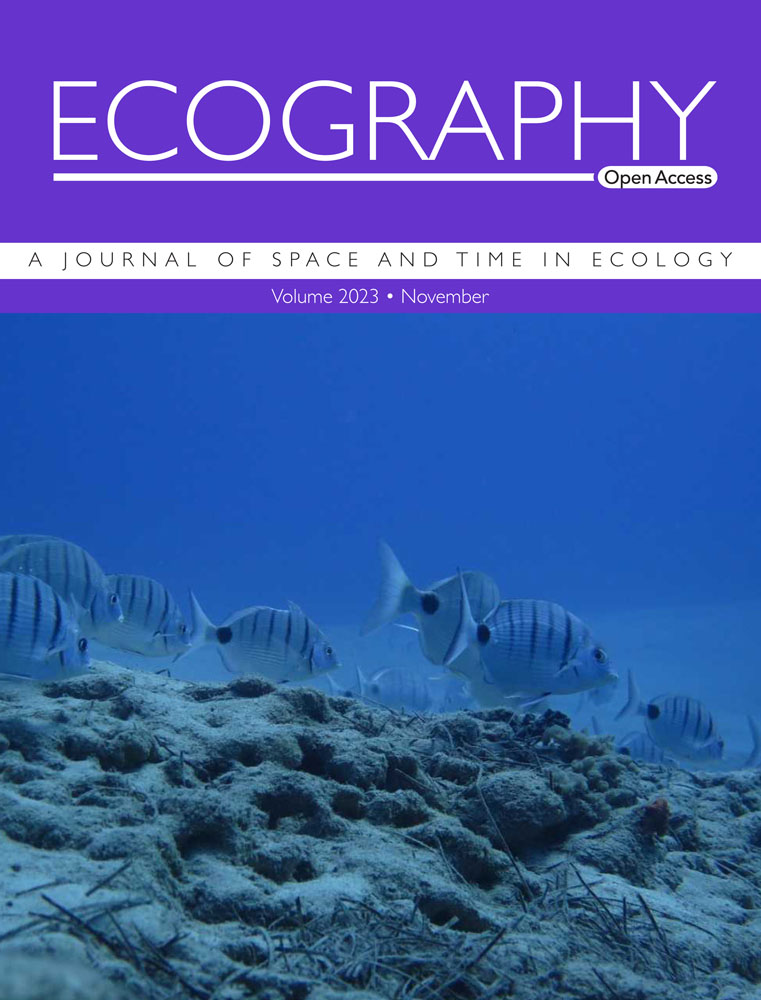Species that dominate spatial turnover can be of (almost) any abundance
IF 5.4
1区 环境科学与生态学
Q1 BIODIVERSITY CONSERVATION
引用次数: 0
Abstract
An ongoing quest in ecology is understanding how species commonness influences compositional change. While each species' contribution to beta diversity (SCBD) depends both on its abundance and how widespread it is (e.g. occupancy) a general expectation for these influences is lacking. Using published data for 9924 species across 177 metacommunities, we modelled relative SCBD as a function of abundance and occupancy using both correlative and mechanistic regression models (the latter derived from population demographic theory). Although the correlative model provided a superior fit to the data, both results suggest it is species with infrequent combinations of abundance and occupancy (high abundance and mid-high occupancy) that make the dominant contribution to beta diversity. The nature of their interaction is most apparent when depicted in abundance–occupancy sample space, which shows the probability of making a dominant contribution to beta diversity is a concave-up function of abundance. Species found in an intermediate number of sites (0.56) required the smallest share of total abundance (0.05) to make a top-decile contribution. Simulations varying evenness of abundance and conspecific spatial patterns support the main findings and show that it is variations in the strength of aggregation that predominantly result in the observed relationship between the abundance and occupancy of a species and its contribution to beta diversity. The abundance–occupancy sample space illustrates how empirical abundance-SCBD relationships can be linear or unimodal and provides a general framework to understand global change processes. To preserve compositional turnover, species of infrequent abundance and occupancy should be prioritized.求助全文
约1分钟内获得全文
求助全文
来源期刊

Ecography
环境科学-生态学
CiteScore
11.60
自引率
3.40%
发文量
122
审稿时长
8-16 weeks
期刊介绍:
ECOGRAPHY publishes exciting, novel, and important articles that significantly advance understanding of ecological or biodiversity patterns in space or time. Papers focusing on conservation or restoration are welcomed, provided they are anchored in ecological theory and convey a general message that goes beyond a single case study. We encourage papers that seek advancing the field through the development and testing of theory or methodology, or by proposing new tools for analysis or interpretation of ecological phenomena. Manuscripts are expected to address general principles in ecology, though they may do so using a specific model system if they adequately frame the problem relative to a generalized ecological question or problem.
Purely descriptive papers are considered only if breaking new ground and/or describing patterns seldom explored. Studies focused on a single species or single location are generally discouraged unless they make a significant contribution to advancing general theory or understanding of biodiversity patterns and processes. Manuscripts merely confirming or marginally extending results of previous work are unlikely to be considered in Ecography.
Papers are judged by virtue of their originality, appeal to general interest, and their contribution to new developments in studies of spatial and temporal ecological patterns. There are no biases with regard to taxon, biome, or biogeographical area.
 求助内容:
求助内容: 应助结果提醒方式:
应助结果提醒方式:


